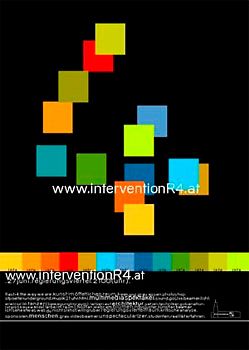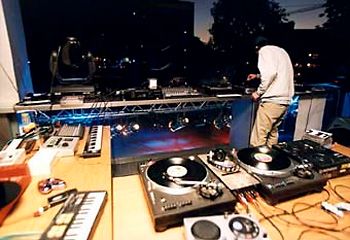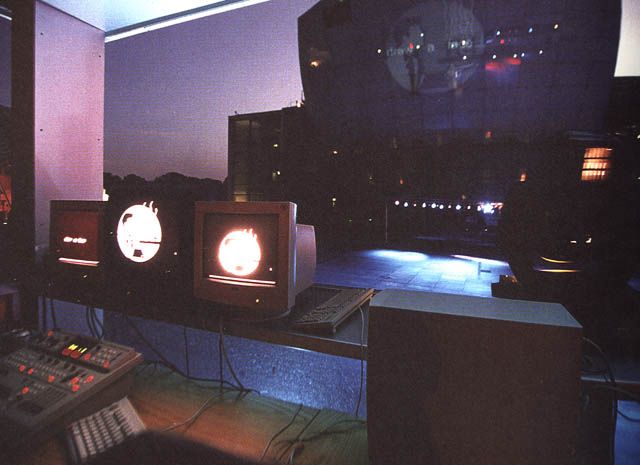Student*innen der FH St. Pölten
:
Interventionr4
Back
Information
The oversized spatial structure of the St. Pölten Regierungsviertel as a 'political space definition' (a rendered space) was explored, delved into, researched and analysed in a project by students of the course for telecommunications and media at St. Pölten. The analysis was accompanied by concrete artistic statements, which were shown in public space within the St. Pölten Regierungsviertel in the exhibition 'interventionR4'.
Curator: Markus Wintersberger
Multimedia , a popular buzzword, can mean more than colourful images and funny noises. Multimedia are supposed to open up new ways of seeing, hearing and feeling, and show familiar things in a new light. This premise was pursued by the students of the St. Pölten college for telecommunications and media when they supplemented the architectural landscape of the St. Pölten Regierungsviertel in the capital of Lower Austria with sound and light installations, and projected animations and videos. For the project 'interventionR4', from June 27 to July 9, work was on show by the young media technicians on the grounds of the Kulturhaus district. An opening party with DJs and live performances transformed the Regierungsviertel into an oversized dance-floor. The exhibition was concentrated mainly on the Lower Austrian regional library building and the adjacent outdoor surfaces. The depot for text, language and knowledge as a static closed architectural space was lit from within and beamed on from outside. The surfaces became a permeable membrane, to the filter of an ethereal light performance. The building itself as well as the adjacent surfaces were to be made to vibrate with modulations in light. The library became an echo chamber, it was painted on, plucked, stroked, scanned in shots – and reacted or changed with each artistic enticement. The work ranged from video projections onto the available buildings' walls or screens erected for the purpose, light manipulation using existing light sources and information terminals, posters and objects.





